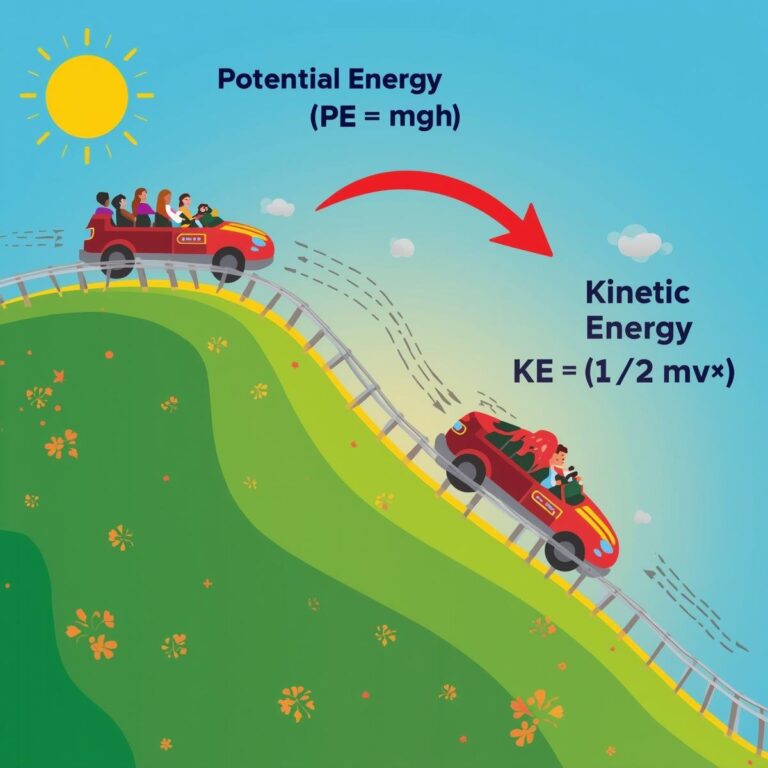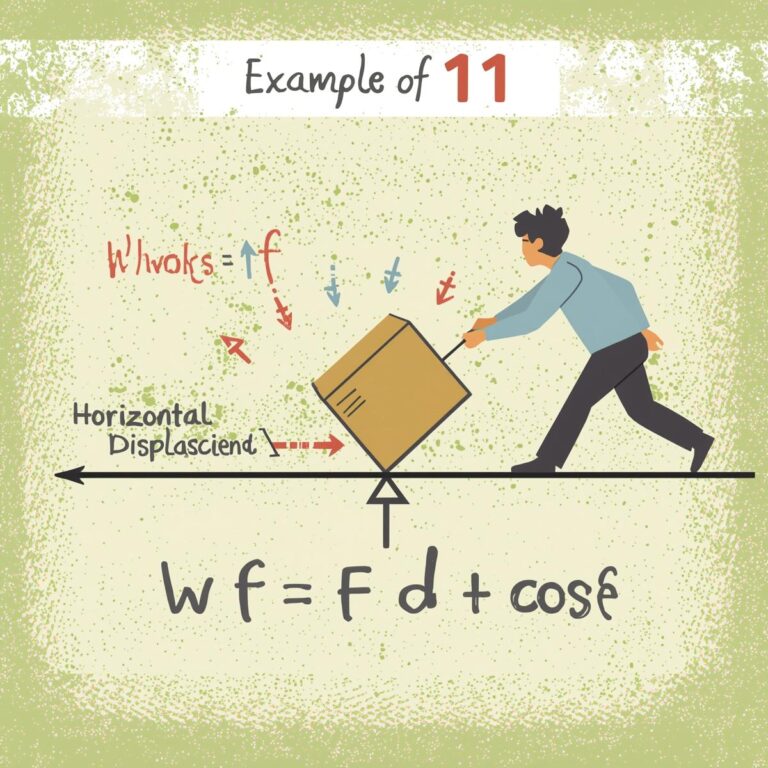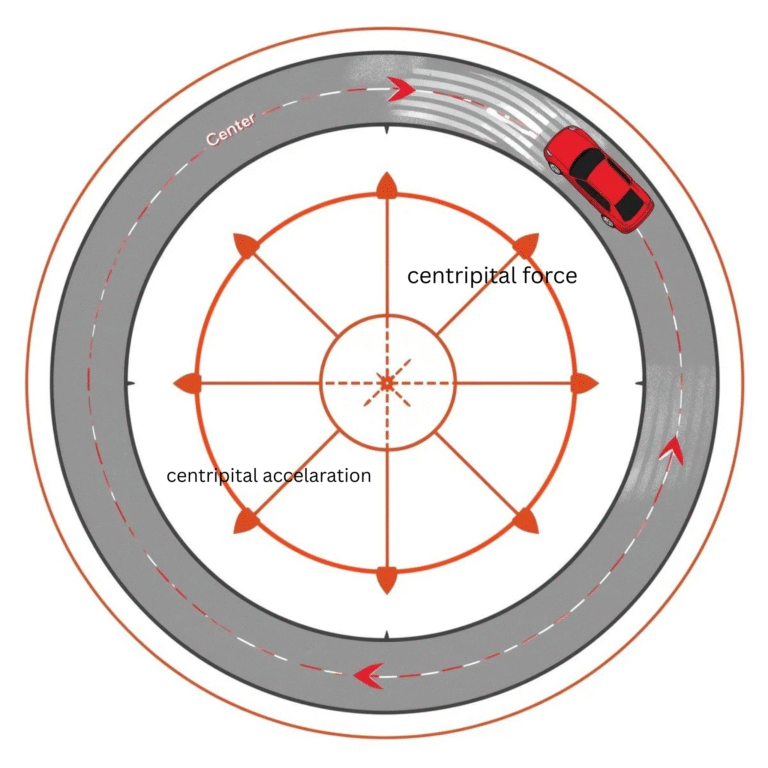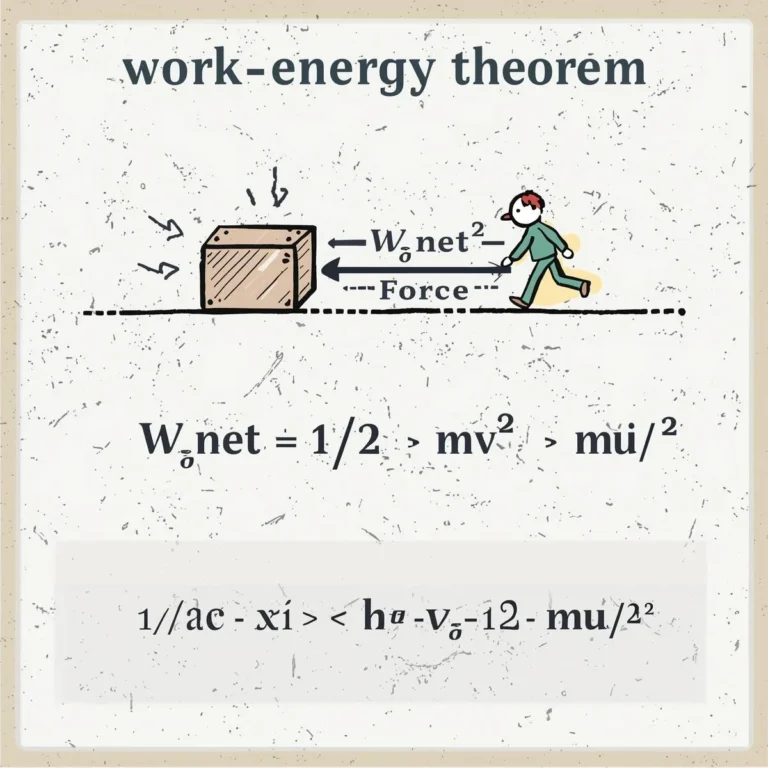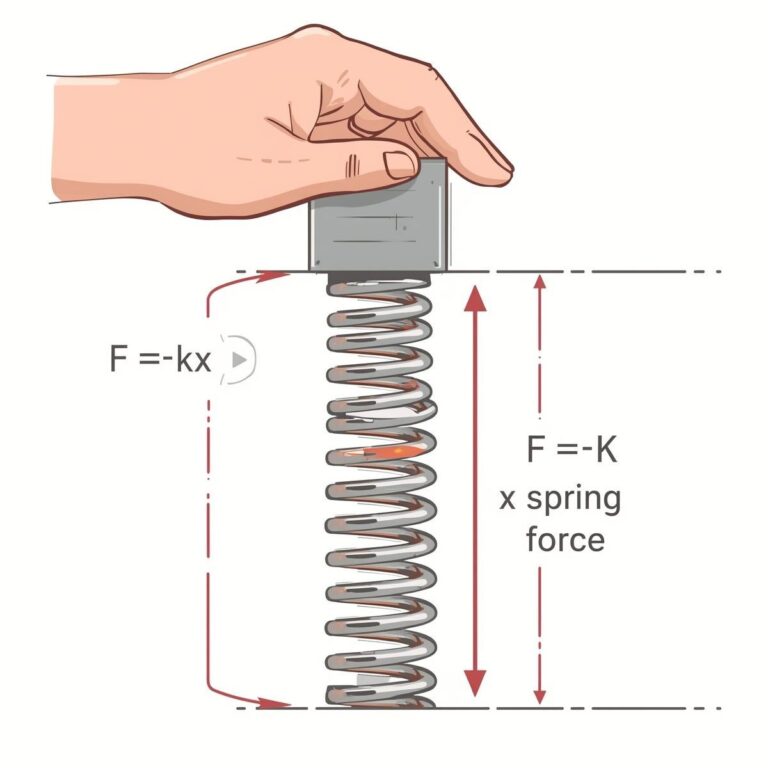Definition
The work-energy theorem states that the net work done by all the forces acting on a particle is equal to the change in its kinetic energy. When work is done on an object, it results in a change in the object’s kinetic energy.
Formula
W_net = ΔKE = KE_final – KE_initial
Where:
- W_net = net work done by all forces (Joule, J)
- KE_final = final kinetic energy (J)
- KE_initial = initial kinetic energy (J)
- KE = (1/2)mv² (m = mass, v = velocity)
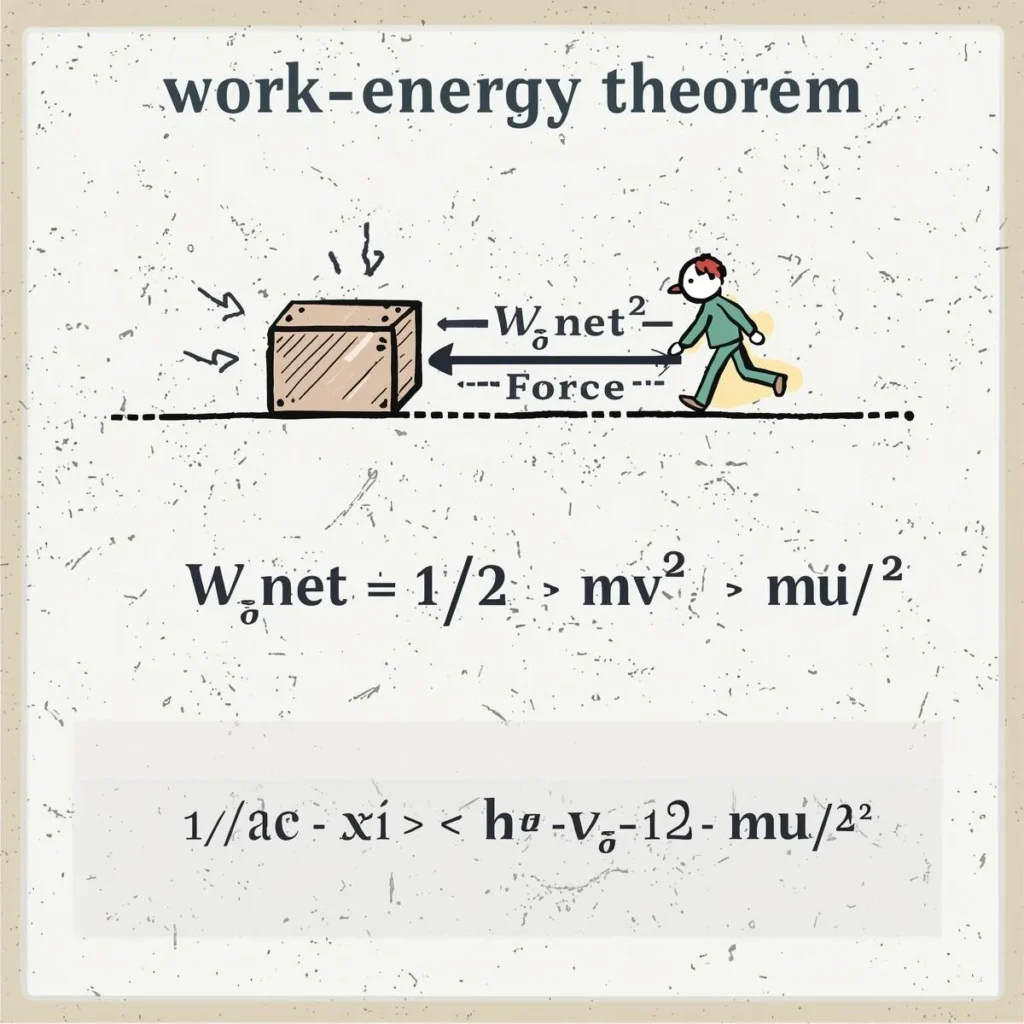
Derivation
Consider a particle of mass m moving in a straight line under the action of a net force F.
From Newton’s second law:
F = m·a
If the particle moves a small distance dx under this force, the work done dW is:
dW = F·dx
Since acceleration a = dv/dt, and velocity v = dx/dt,
a = dv/dt = (dv/dx)·(dx/dt) = v·dv/dx
So,
F = m·a = m·v·dv/dx
Therefore,
dW = F·dx = m·v·dv/dx·dx = m·v·dv
Integrate both sides from initial velocity u to final velocity v:
∫(from u to v) m·v·dv = ∫(from x₁ to x₂) dW
m ∫(from u to v) v·dv = W_net
m [ (1/2) v² ] (from u to v) = W_net
m [ (1/2) v² – (1/2) u² ] = W_net
W_net = (1/2) m v² – (1/2) m u²
W_net = KE_final – KE_initial
This proves the work-energy theorem.
Example
A ball of mass 2 kg is initially at rest. A force acts on it and accelerates it to a velocity of 5 m/s.
- Initial velocity, u = 0
- Final velocity, v = 5 m/s
- Mass, m = 2 kg
Initial kinetic energy, KE_initial = (1/2) × 2 × (0)² = 0 J
Final kinetic energy, KE_final = (1/2) × 2 × (5)² = 25 J
Change in kinetic energy, ΔKE = 25 J – 0 J = 25 J
According to the work-energy theorem, the net work done on the ball is 25 J.
Key Points
- The theorem applies to all types of forces (conservative and non-conservative).
- If net work is positive, kinetic energy increases.
- If net work is negative, kinetic energy decreases.
Illustrative Image
Summary Table
| Aspect | Description |
|---|---|
| Definition | Net work done equals change in kinetic energy |
| Formula | W_net = KE_final – KE_initial |
| SI Unit | Joule (J) |
| Example | Ball accelerated from rest to 5 m/s: W_net = 25 J |
